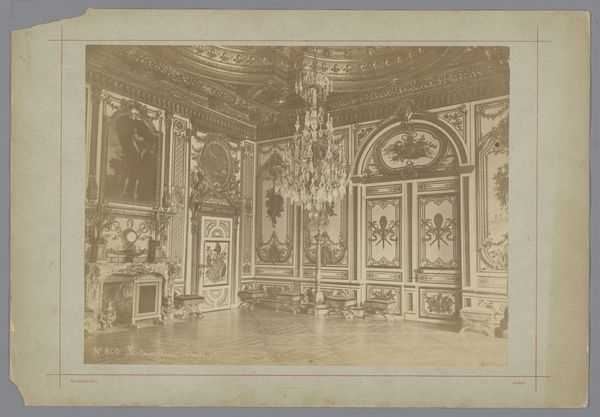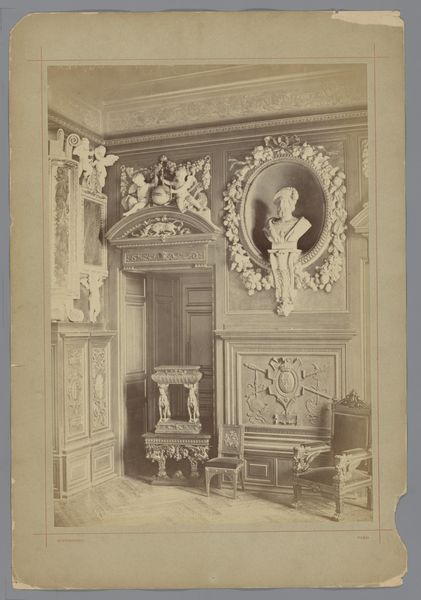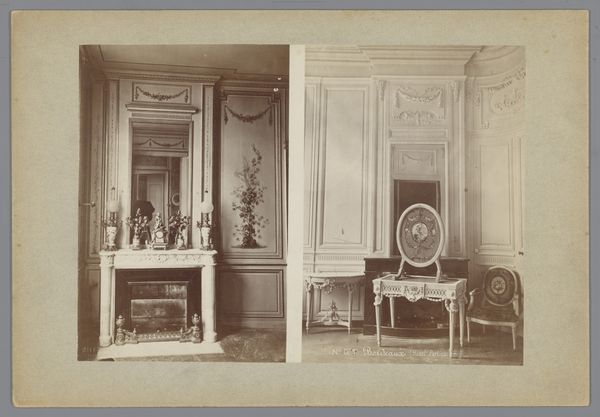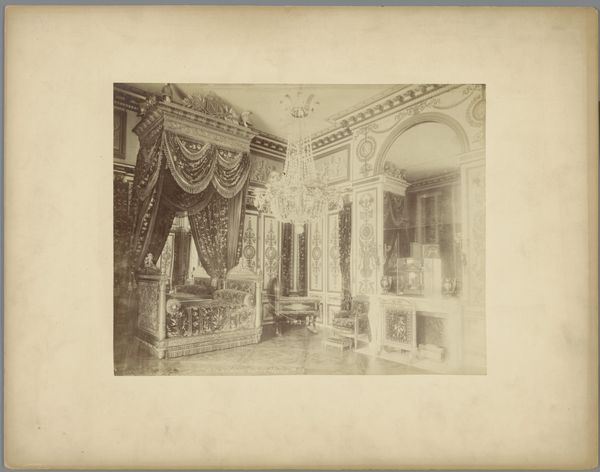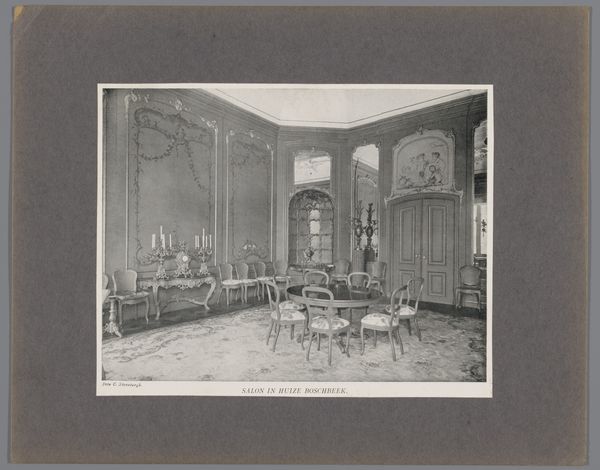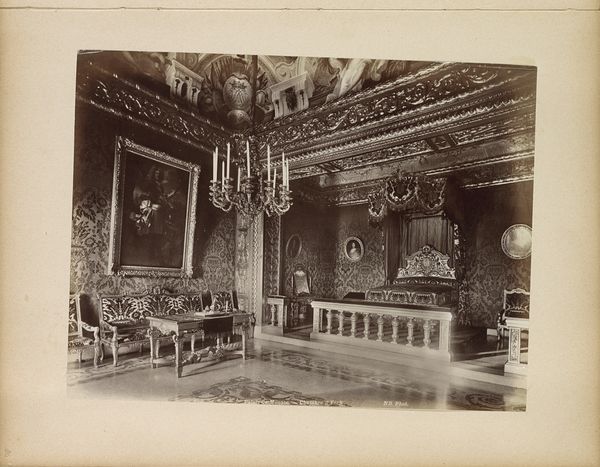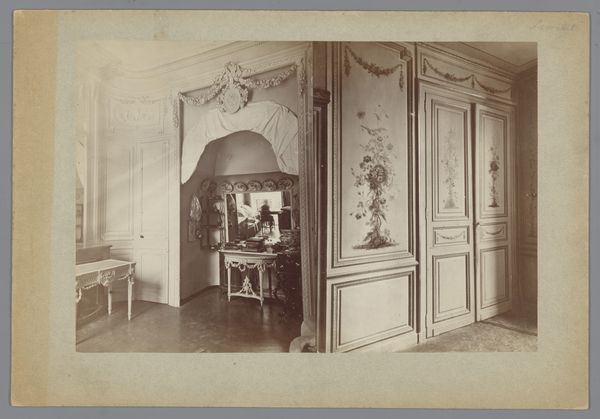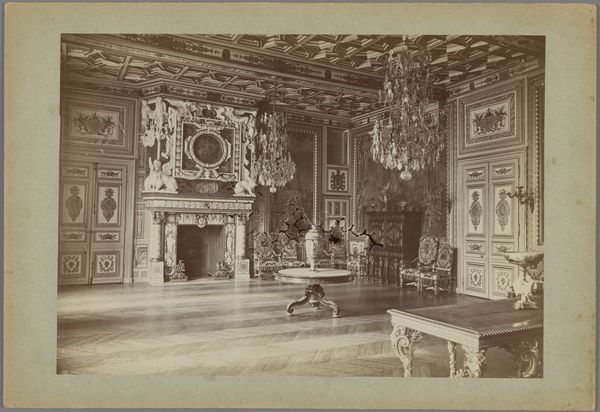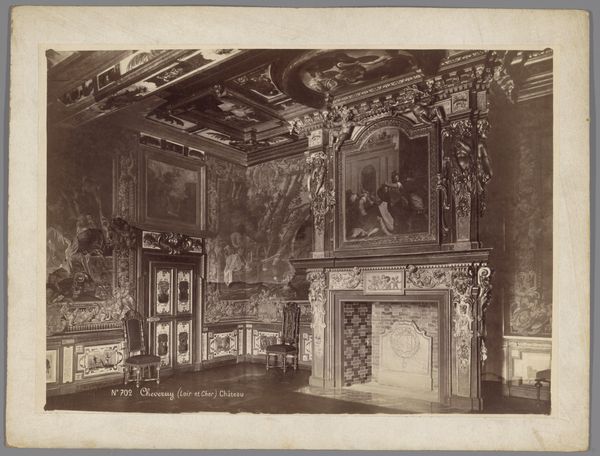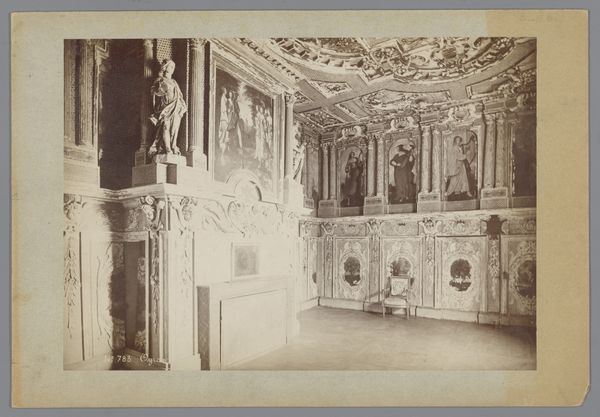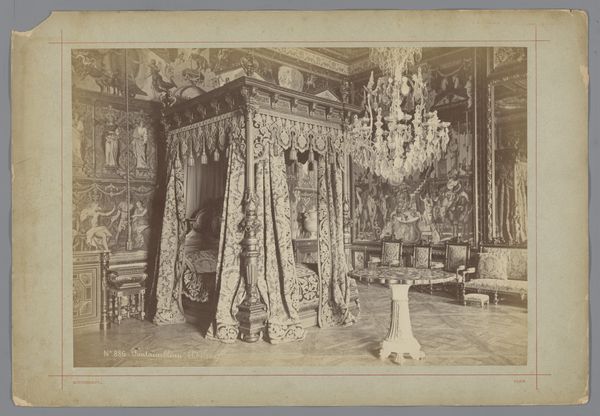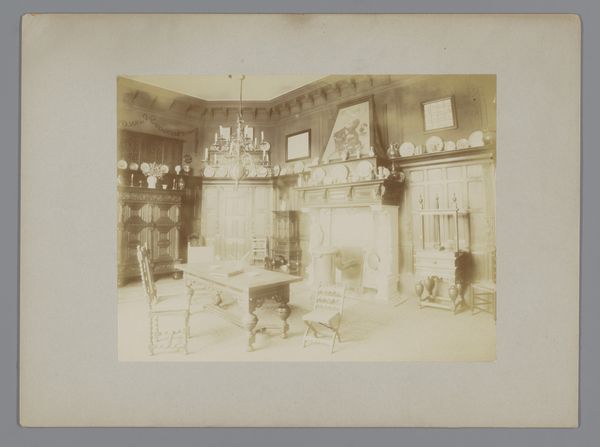
Boudoir van Marie-Antoinette in het paleis van Fontainebleau c. 1875 - 1900
0:00
0:00
Dimensions: height 250 mm, width 357 mm
Copyright: Rijks Museum: Open Domain
Curator: It's incredibly opulent, isn't it? Almost overwhelmingly so. It’s got a certain weight to it. Editor: This photograph captures Marie-Antoinette's boudoir in the Palace of Fontainebleau. The image is a print made using photographic methods by Médéric Mieusement, sometime between 1875 and 1900. Note how it depicts a space not as a mere backdrop, but as a stage. Curator: Indeed! And staged it certainly feels. Notice all the carefully placed objects. The statuettes above the doors, echoing classical poses. I’m also seeing faint faces on the wall’s ornamentation – are those deliberate visual echoes or just coincidences, do you think? Editor: Nothing here is a coincidence. The neoclassical elements, the refined details, all speak to a very particular kind of power, a soft power achieved through curating and meticulously cultivating personal space. This image tells a story of consumption, privilege and constructed femininity within the gilded cage of aristocracy. Think of what that boudoir symbolizes, compared to the living conditions of the average French citizen during that time period. Curator: And it's that very dissonance, that deliberate distancing, that fascinates me. These visual cues acted like carefully crafted symbols, reaffirming the established social hierarchy, and projecting an image of both grace and absolute power. Notice, the colorations lean almost sepia-toned: doesn't it emphasize the detachment from a raw and harsh reality outside palace walls? Editor: Absolutely. And think of what wasn’t captured. Whose labor was required to maintain that level of luxury? To have one’s chamber photographed to signal refined sensibilities points directly at a class divide so wide it seems difficult to overcome without drastic upheaval. What do we make of our ongoing obsession with this particular moment and visual culture when those power dynamics remain in force, just updated? Curator: The symbols endure, if nothing else. Whether we critique them, celebrate them, or somewhere in between, it gives them weight, doesn’t it? Editor: It's a weight, indeed. Perhaps understanding where such beauty came from will inspire people to rethink social structures.
Comments
No comments
Be the first to comment and join the conversation on the ultimate creative platform.
